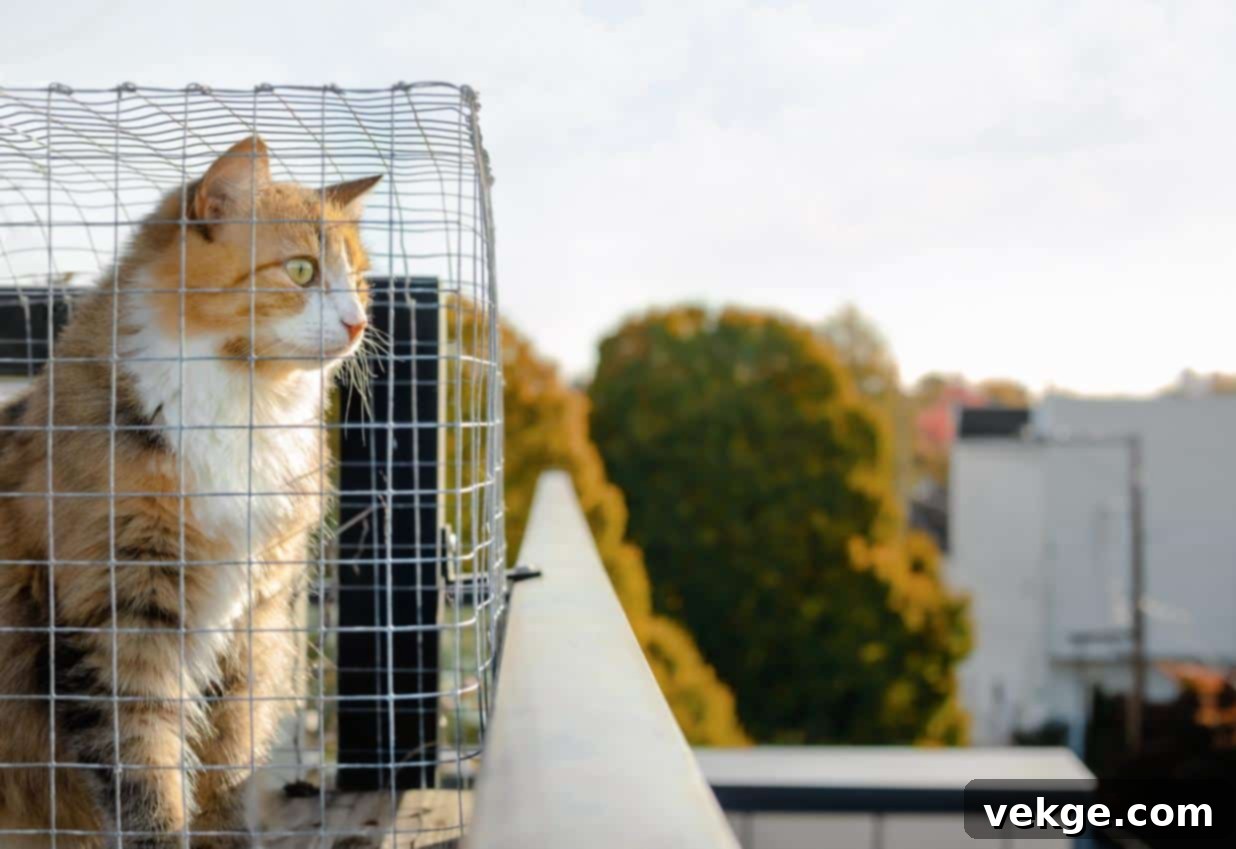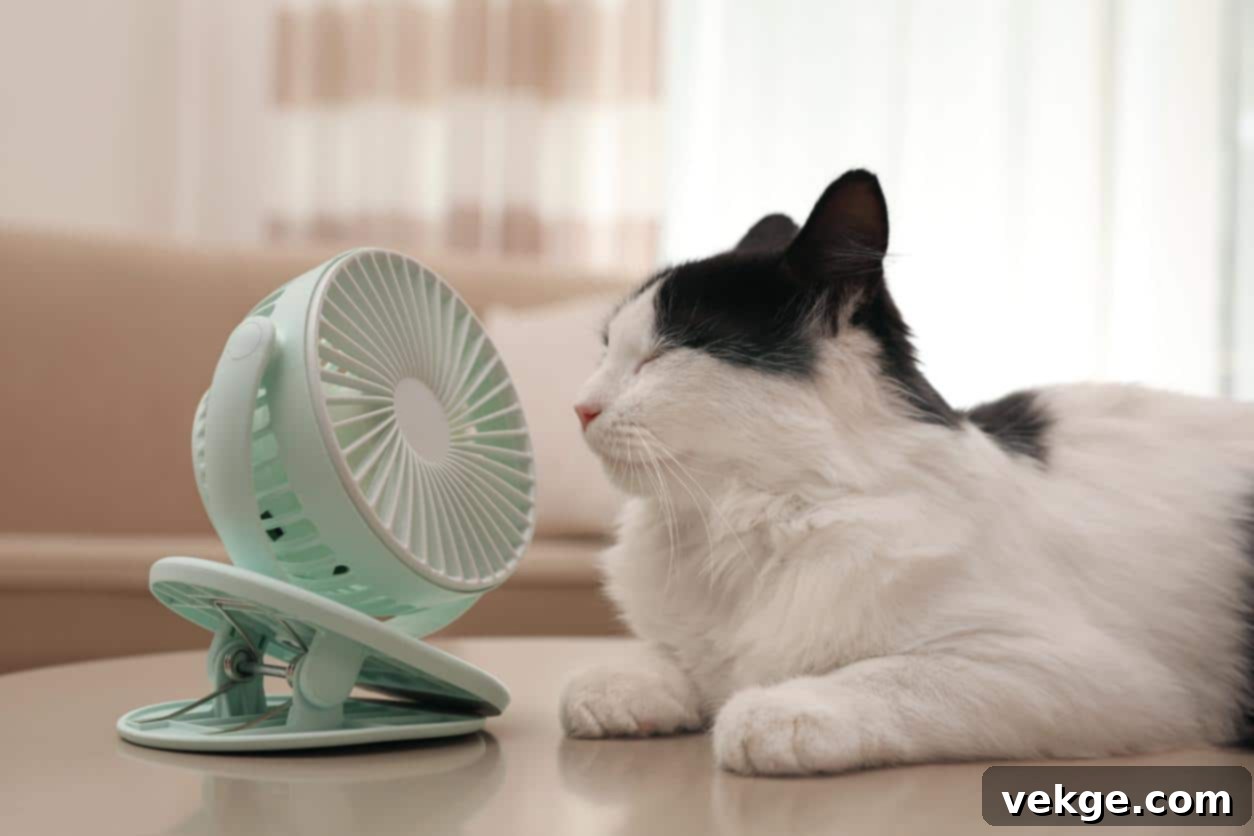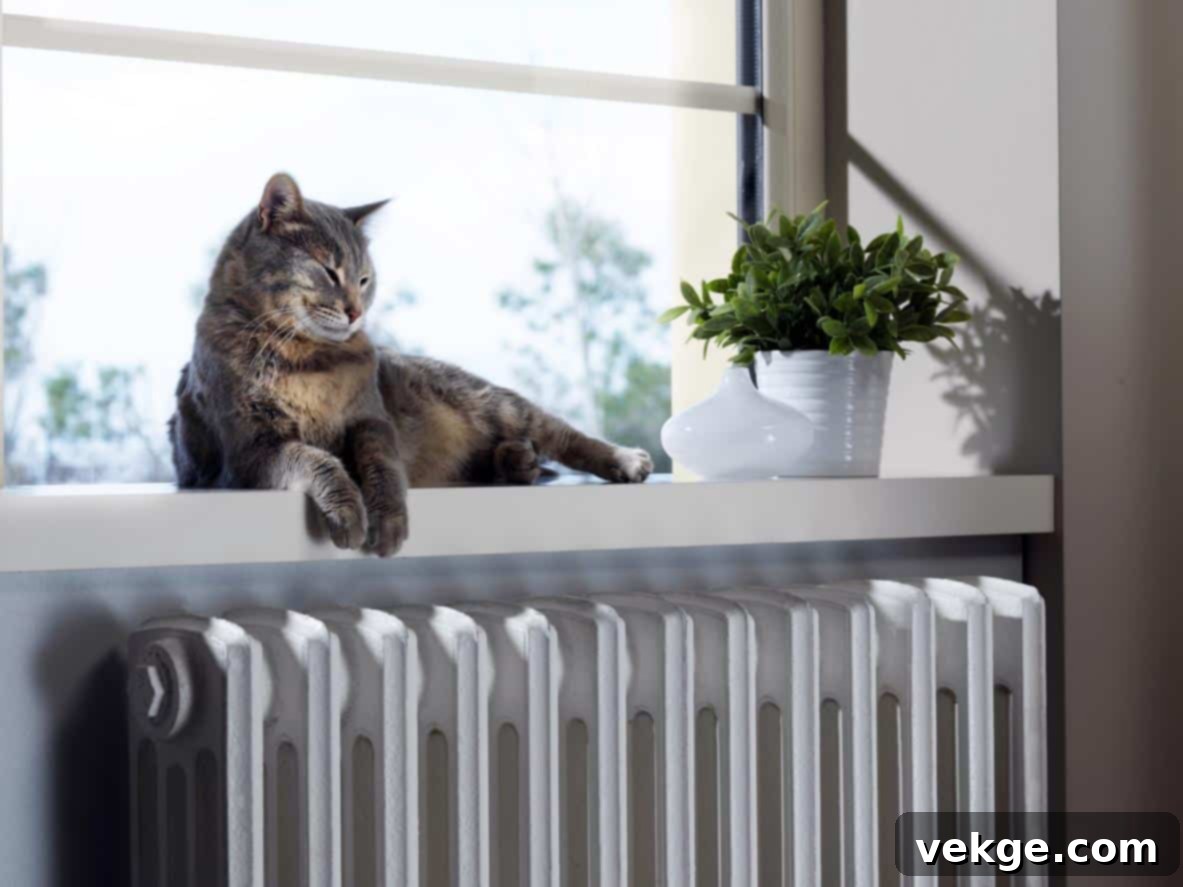The Ultimate Guide to Year-Round Cat Comfort: DIY & Budget-Friendly Feline Sanctuary Solutions
Our cherished feline companions enrich our lives with their playful antics, soothing purrs, and independent spirits. Just like us, they deserve a dedicated, comfortable space that caters to their needs, regardless of the season. Creating such a haven doesn’t require a hefty budget or extensive renovations; in fact, many of the most effective solutions are surprisingly simple, sustainable, and budget-conscious.
This comprehensive guide delves into a variety of creative decor options and practical tips designed to transform your home into a year-round paradise for your beloved furry friend. From repurposing old furniture and crafting ingenious climbing structures to strategically placing cozy nooks and cool retreats, we’ll show you how to enhance your cat’s well-being throughout the year, all while being kind to your wallet and the environment.
Crafting a Cat’s Castle: Year-Round Comfort with DIY Flair
Cats bring endless joy and amusement into our lives, and in return, they thrive in environments that stimulate their natural instincts while providing security and comfort. A truly pet-friendly home considers a cat’s innate desire to climb, scratch, observe, and hide. By focusing on these core needs, we can create spaces that not only look good but also profoundly contribute to our cats’ happiness and health.
While the allure of a dedicated radiator for your cat might seem ideal for winter, the cost of installing central heat can be prohibitive. Fortunately, there are countless inventive ways to create a cozy haven for your furry friend without breaking the bank. The key is often in seeing everyday objects with a new, feline-focused perspective.
Embracing Vertical Space: High Perches and Climbing Structures
Cats are natural climbers and observers; they love surveying their domain from above. Vertical space offers them a sense of security, a vantage point for watching the world (and their humans), and valuable exercise. Instead of splurging on an expensive, pre-made cat tree, consider these creative and customisable options:
-
DIY Wall Climber & Shelves: Transform unused wall space into an exciting, multi-level playground. Mount sturdy shelves or L-shaped brackets securely to your wall. For enhanced traction and scratching opportunities, cover these shelves with soft carpeting remnants, sisal rope, or even textured fabric. This not only provides your cat with an elevated perch to nap and observe but also offers a much-needed scratching surface.
Pro Tip for Warmth: For extra coziness during colder months, strategically mount these shelves near south-facing windows. The natural sunlight will bathe the shelves in warmth, creating a naturally toasty and inviting napping area that costs absolutely nothing to heat. Ensure all materials, especially any paint or adhesive, are pet-safe and non-toxic.
-
Repurposed Bookcase Haven: An old, sturdy bookcase can find new life as a feline playground and sleep sanctuary! Begin by securing the bookcase to the wall for stability, preventing any tipping hazards. Line the shelves with soft fleece liners, old sweaters, or plush blankets, creating a layer of insulation and a luxurious surface for napping. For added intrigue, remove a few shelves to create taller cubbies or cut out entry/exit points between sections, turning it into a multi-story adventure.
This provides a sense of enclosure that many cats adore, offering a private retreat within a busy household. Choose washable fabrics for easy cleaning to maintain a hygienic space for your cat.
-
Curtain Cubby Creativity: Dedicate a quiet corner of a room and use an old curtain rod or a tension rod to hang a lightweight curtain. Inside this makeshift cubbyhole, place a comfortable cat bed, a soft blanket, or a plush pillow. This simple setup creates an immediate sense of security and a warm, enclosed space where your cat can relax, hide, and feel protected from drafts or household commotion.
Winter Upgrade: To significantly boost warmth during winter, hang a thermal curtain behind the lightweight decorative curtain. This creates an extra layer of insulation, effectively trapping heat inside the cubbyhole and making it exceptionally cozy for your cat. For summer, choose a breathable cotton or linen curtain to allow for better airflow while still providing privacy.
Essential Scratching Posts: DIY Solutions for Healthy Claws
Scratching is an absolutely essential feline behavior, vital for maintaining healthy claws, stretching muscles, and marking territory. Providing attractive scratching surfaces can save your furniture and contribute significantly to your cat’s overall well-being. Here’s how to add a touch of DIY flair to this necessity:
-
Sisal Post Power-Up: Take a simple, perhaps worn-out, sisal scratching post and give it a complete makeover! Purchase new sisal rope (available at hardware stores or online) and wrap the post tightly, securing the ends with strong, pet-safe hot glue or staples. This not only creates a more visually appealing and textured surface but also offers a fresh, satisfying scratching experience for your cat. Experiment with different colors of sisal rope for a unique look.
Natural Base Boost: For an extra element of texture and insulation, consider adding a coir mat to the base of the post. Coir, a natural fiber derived from coconut husks, provides a slightly different scratching sensation and offers some natural insulation from cold floors. It’s also durable and environmentally friendly.
-
Cardboard Capers: For a budget-friendly and easily replaceable option, create scratching posts from sturdy cardboard. Cut a heavy-duty cardboard tube (e.g., from carpet rolls or packing material) to your desired height and secure it to a stable, weighted base. Then, wrap the post with sisal rope, carpet scraps, or even layers of corrugated cardboard glued together to create a multi-textured scratching surface. This DIY approach is not only cost-effective but also allows for endless customization in terms of size, shape, and texture.
This option is particularly great for cats who prefer horizontal scratching if you secure the cardboard to a flat base. When the surface gets worn out, you can easily replace just the scratching material or the entire post, making it a sustainable choice.

Window Perches & Safe “Catios”: Connecting with the Outdoors
Cats are endlessly fascinated by the outside world. Providing a safe way for them to observe birds, squirrels, and neighborhood activity is crucial for their mental stimulation. While a full-fledged, unprotected balcony for your cat via an open sash window is never recommended due to severe safety concerns, you can create secure window perches or even mini “catios” that offer a sense of enclosure and outdoor connection.
Custom-built cat window balconies can indeed be expensive, but the good news is that you can create a safe, DIY version with a few materials and careful construction. This provides your feline friend with a window perch that offers both entertainment and a cooling-off place during hot summer days. Remember: safety is paramount for any DIY cat project!
DIY Window Perch Steps:
- Prepare the Board: Select a sturdy, untreated wooden board that fits the width of your window frame. Sand the board thoroughly to remove any splinters. If desired, paint or seal it with pet-safe, non-toxic paint or sealant, allowing it to dry completely.
- Attach Brackets: Secure heavy-duty L-brackets to the underside of the board, ensuring they are strong enough to support your cat’s weight with a generous safety margin.
- Mount to Wall: Using appropriate screws and wall anchors (depending on your wall material), securely mount the board with L-brackets to the wall directly below the openable sash window. Double-check that there’s enough clearance for the window to open and close without touching the platform.
- Install Safety Mesh (Crucial!): This is the most important step for safety. Obtain sturdy, cat-safe mesh or netting (e.g., heavy-duty pet screen or galvanized wire mesh with small openings). Lay the mesh over the board and extend it upwards, securing it to the sides of the window frame and the top of the window opening. Use strong cable ties, staples, or small eye hooks to attach the mesh around the edges of the board and through the mesh itself. Ensure the mesh is taut, free of any gaps large enough for your cat to squeeze through, and securely fastened on all sides to prevent escapes.
- Add Comfort: Place a comfortable cat bed, a fleece blanket, or even a piece of artificial grass on the platform to provide a cozy resting spot. This makes the perch inviting and adds another layer of security.
Important Safety Note: When implementing any DIY options, always ensure all structures are robustly stable and securely mounted to prevent tipping, collapsing, or accidental falls. Regularly inspect your DIY creations for wear and tear, and make repairs immediately. Never leave your cat unsupervised on a DIY window perch without a secure mesh enclosure.
Winter Warm-Up Tips: Keeping Your Feline Friend Snug
As temperatures drop, our homes become primary shelters, and making them extra warm for our pets is a thoughtful gesture. Beyond the structural changes, several simple decor tweaks can significantly enhance your cat’s comfort during the colder months:
- Cozy Throws and Blankets: Drape soft, warm throws and blankets over furniture pieces where your pets like to relax – especially sofas, armchairs, and beds. This creates an inviting, insulated spot for them to snuggle up, providing immediate warmth and a sense of security. Consider materials like fleece, faux fur, or wool for maximum coziness.
- Plush Rugs and Mats: Place plush rugs, thick mats, or even sheepskin throws in high-traffic areas frequented by your pet, particularly near exterior doors or on cold tile/hardwood floors. This provides a warm and comfortable surface for their paws, insulating them from the chill emanating from the floor. This is especially beneficial for older cats or those with joint issues.
- Harnessing Natural Sunlight: Identify the sunniest spots in your house during winter. These are often areas near south-facing windows where direct sunlight streams in. Position your cat’s bed, a designated throw, or a favorite climbing structure in these areas. The natural sunlight offers a gentle, free, and utterly irresistible source of warmth for your furry friend, creating perfect sun-bathing spots.
- Draft Stoppers: Use draft stoppers at the base of doors and windows to prevent cold air from seeping in, especially in rooms where your cat spends a lot of time.
- Heated Cat Beds: For ultimate warmth, consider a low-wattage, thermostatically controlled heated cat bed. These are designed to warm to your cat’s natural body temperature and can be a godsend for older or thin-furred cats. Always choose a pet-safe product designed for continuous use.

Beat the Summer Heat: Keeping Your Cat Cool and Comfortable
Summer can be just as challenging for our furry friends as winter, sometimes even more so due to the risk of overheating. Indoor cats rely entirely on us to help them regulate their body temperature. Here are some essential tips to keep your indoor cat cool and comfortable during hot weather:
- Strategic Shade with Curtains and Blinds: During the hottest part of the day, actively close curtains or blinds on sunny windows, especially those facing south or west. Thermal or blackout curtains can significantly reduce heat gain. This simple action can drastically lower the indoor temperature and prevent your cat’s favorite sunbathing spots from becoming dangerously hot.
-
Create Designated Cool Zones: Offer several options for your cat to cool down.
- Place a slightly damp (not soaking wet) towel on a cool tile or bathroom floor.
- Create a little hideaway using a cardboard box lined with a ceramic tile or marble slab (which stays naturally cool). You can even place a frozen water bottle (wrapped in a towel to prevent direct contact) inside for an extra chill.
- Elevated cat beds allow for airflow underneath, which can make a noticeable difference in comfort.
- Consider a pet-safe cooling mat; these often contain a gel that activates with pressure, providing a cool surface without refrigeration.
- Air Conditioning and Fans: If you have air conditioning, maintain a comfortable temperature (around 78°F or 25°C is generally suitable for both humans and most cats). If not, strategically placed fans can help circulate air. However, ensure fans are not blowing directly onto your cat, as constant direct airflow can be irritating. Instead, aim them to create general air circulation in the room. Always ensure cords are safely tucked away.
- Hydration is Key: Always provide multiple sources of fresh, cool water throughout your home. Consider adding a cat water fountain, as the moving water can entice cats to drink more. During extreme heat, you can even add a few ice cubes to their water bowl. Wet food also contributes to hydration.
- Grooming for Coolness: Regular brushing, especially for long-haired breeds, helps remove loose fur and prevents matting, which can trap heat close to the body.
Remember, maintaining a comfortable environment for your kitty goes beyond decor. Always ensure fresh water is accessible, and during winter, consider offering lukewarm water to encourage drinking. Pay close attention to your cat’s behavior; excessive panting, lethargy, or drooling are signs of overheating and require immediate attention from a veterinarian.
By thoughtfully implementing these simple decor tips and seasonal adjustments, your home will truly become a haven for your furry companion. These creative, budget-friendly solutions ensure they stay happy, healthy, and comfortable all year round, strengthening the special bond you share and making your home a true sanctuary for every member of the family, including the purr-fect ones.
